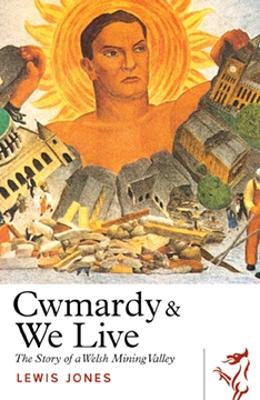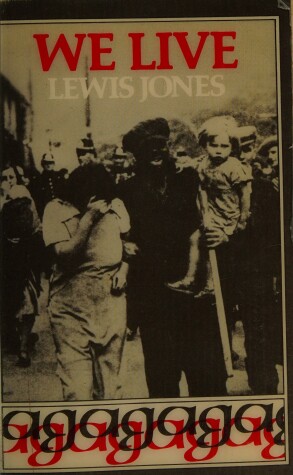Library of Wales
3 primary works
Book 4
The epic industrial novels of the 1930s, Cwmardy and We Live are published together here for the first time. In Cwmardy, Big Jim, collier and ex-Boer War soldier, and his partner Sian endure the impact of strikes, riots, and war, while their son Len emerges as a sharp thinker and dynamic political organizer. Len's tale is taken up in We Live, in which he is influenced by Mary, a teacher, and the Communist Party, which becomes central to his work both underground and in union politics, and to his decision to leave and fight in the Spanish Civil War. Cwmardy and We Live paint a graphic portrait of the casual exploitation, tragedy, and violence as well as the political hope and humanity of South Wales industrial workers from the 1900s to the 1930s.
Book 4
Written by miner, union organiser and activist Lewis Jones, Cwmardy is the story of Big Jim, collier and Boer war soldier and his wife Siân as they strive to wrest a decent life from dire conditions despite the exploitation of mine owners and the apathy of a distant and uncaring political class.
In We Live, their son Len emerges as a sharp-thinker and dynamic political organiser. He is influenced by Mary, a teacher, and the politics of the Communist Party, which will become central to his work both underground and with the union. It will ultimately lead to his decision to leave and fight in the Spanish Civil War.
Echoing the European classics of Zola and Maupassant, the lives of Big Jim, Siân, Len and Mary reflect the changing times of a turbulent world which will see them survive strikes, riots, and biting poverty while the dark shadows of a world war gather to offer an uncertain future.
In We Live, their son Len emerges as a sharp-thinker and dynamic political organiser. He is influenced by Mary, a teacher, and the politics of the Communist Party, which will become central to his work both underground and with the union. It will ultimately lead to his decision to leave and fight in the Spanish Civil War.
Echoing the European classics of Zola and Maupassant, the lives of Big Jim, Siân, Len and Mary reflect the changing times of a turbulent world which will see them survive strikes, riots, and biting poverty while the dark shadows of a world war gather to offer an uncertain future.
Book 41
The second of Lewis Jones' two epic industrial novels of the 1930s. Len, son of Big Jim and dynamic political organiser, takes centre stage in Lewis Jones' sequel to Cwmardy. Along his journey, he is influenced by Mary, a teacher, and the Communist Party, which becomes central to his work both underground and in union politics, and to his decision to leave and fight in the Spanish Civil War. We Live paints a graphic portrait of the casual exploitation, tragedy and violence as well as the political hope and humanity of South Wales industrial workers from the 1900s to the 1930s.


